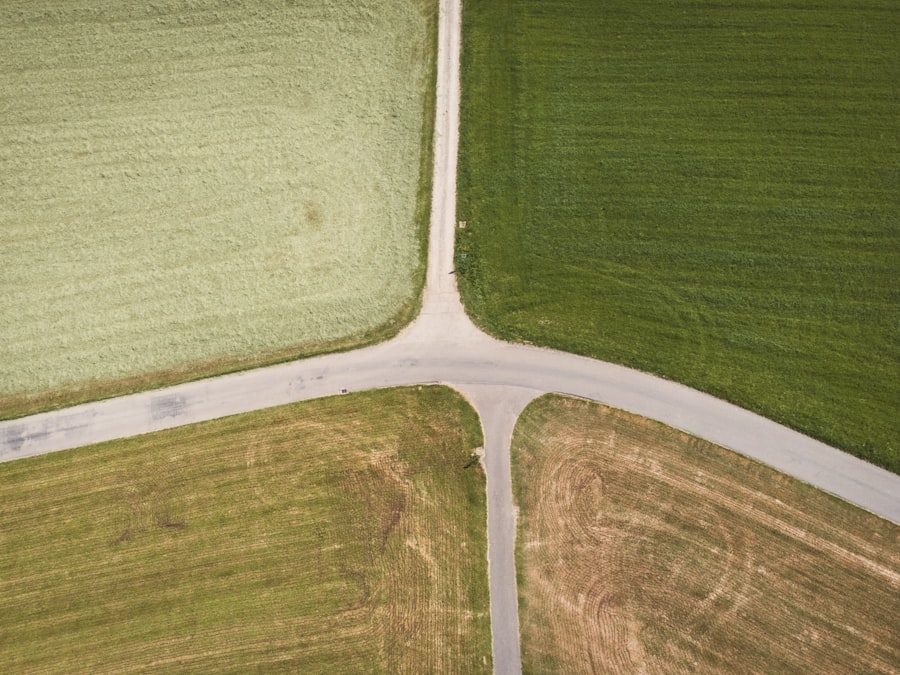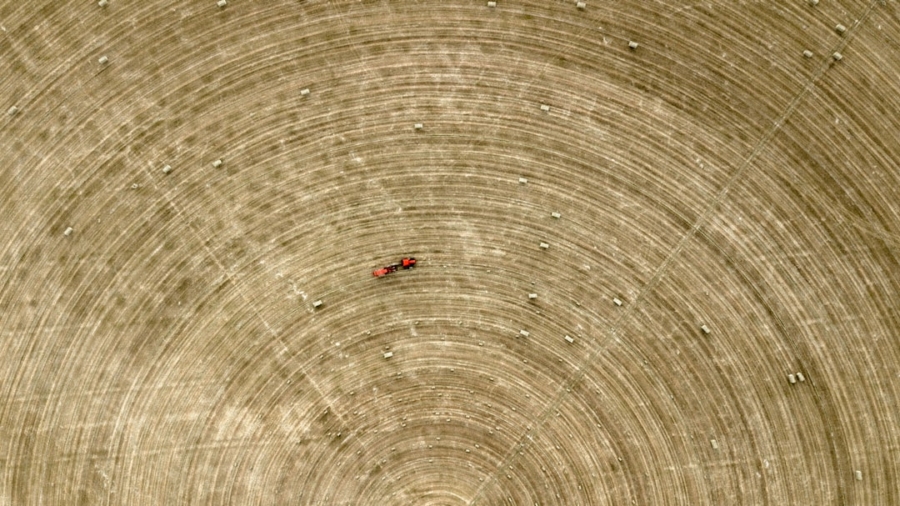The advent of technology has revolutionized various sectors, and agriculture is no exception. Agricultural drones, also known as unmanned aerial vehicles (UAVs), have emerged as a transformative tool in modern farming practices. These drones are equipped with advanced sensors, cameras, and imaging technology that allow farmers to monitor their fields with unprecedented precision.
The integration of drones into agriculture is not merely a trend; it represents a significant shift towards more efficient and sustainable farming methods. As the global population continues to rise, the demand for food increases, necessitating innovative solutions to enhance agricultural productivity.
Farmers can now utilize drones for a variety of applications, including crop monitoring, soil analysis, and even livestock management. The ability to collect real-time data from the air allows for more informed decision-making, ultimately leading to better resource management and increased yields. As we delve deeper into the benefits and applications of agricultural drones, it becomes clear that they are not just a technological novelty but a vital component of the future of farming.
Key Takeaways
- Agricultural drones are unmanned aerial vehicles used in farming to monitor crop health, optimize irrigation, and apply pesticides and fertilizers.
- Benefits of using agricultural drones include increased efficiency, reduced labor costs, and improved crop management.
- Agricultural drones play a crucial role in improving crop yield by providing real-time data on plant health, moisture levels, and nutrient deficiencies.
- Precision agriculture is enhanced by agricultural drones through the use of advanced sensors and imaging technology to target specific areas for treatment.
- Overcoming challenges with agricultural drones involves addressing issues such as limited battery life, regulatory restrictions, and data management concerns.
Benefits of Using Agricultural Drones
The benefits of using agricultural drones are manifold, significantly enhancing the efficiency and effectiveness of farming operations. One of the primary advantages is the ability to conduct aerial surveys over large areas in a fraction of the time it would take using traditional methods. This rapid data collection enables farmers to identify issues such as pest infestations, nutrient deficiencies, or water stress much earlier than they could through ground inspections alone.
For instance, a drone equipped with multispectral cameras can capture images that reveal variations in plant health, allowing farmers to take targeted action before problems escalate. Moreover, agricultural drones contribute to cost savings by optimizing resource use. By providing precise data on crop health and soil conditions, farmers can apply fertilizers, pesticides, and water more judiciously.
This not only reduces input costs but also minimizes environmental impact by preventing over-application of chemicals that can lead to soil degradation and water pollution. For example, a study conducted in California found that farmers using drones for precision agriculture were able to reduce their pesticide use by up to 30%, demonstrating a clear economic and ecological advantage.
Role of Agricultural Drones in Improving Crop Yield

The role of agricultural drones in improving crop yield cannot be overstated. By enabling farmers to monitor their fields closely and gather actionable insights, drones facilitate timely interventions that can significantly enhance productivity. For instance, drones can identify areas within a field that are underperforming due to factors such as poor drainage or inadequate sunlight.
Armed with this information, farmers can implement targeted strategies—such as adjusting irrigation systems or modifying planting patterns—to address these issues effectively. Additionally, drones play a crucial role in precision planting and crop management. With the ability to create detailed maps of fields, farmers can optimize planting density and spacing based on specific soil conditions and crop requirements.
This tailored approach not only maximizes yield potential but also promotes healthier crop development by reducing competition for resources among plants. In regions where traditional farming practices have led to declining yields, the adoption of drone technology has shown promising results; for example, farmers in parts of India have reported yield increases of up to 20% after integrating drone-assisted practices into their operations.
How Agricultural Drones Can Help with Precision Agriculture
Precision agriculture is an approach that leverages technology to enhance farming efficiency and sustainability, and agricultural drones are at the forefront of this movement. By providing high-resolution aerial imagery and data analytics capabilities, drones enable farmers to implement precision agriculture techniques that were previously unattainable. For instance, drones equipped with thermal imaging sensors can detect variations in temperature across a field, which may indicate differences in moisture levels or plant health.
This information allows farmers to make informed decisions about irrigation scheduling and resource allocation. Furthermore, the integration of drones with other technologies such as Geographic Information Systems (GIS) and Global Positioning Systems (GPS) enhances their utility in precision agriculture. Farmers can create detailed maps that highlight variations in soil fertility or crop health, enabling them to tailor their management practices accordingly.
For example, variable rate technology (VRT) allows for the application of fertilizers at different rates across a field based on the specific needs identified through drone data. This not only improves crop performance but also reduces waste and environmental impact.
Overcoming Challenges with Agricultural Drones
Despite the numerous advantages offered by agricultural drones, several challenges must be addressed to maximize their potential in farming. One significant hurdle is the initial cost associated with purchasing and maintaining drone technology. While prices have decreased over the years, high-quality drones equipped with advanced sensors can still represent a substantial investment for many farmers, particularly those operating on smaller scales.
To mitigate this issue, cooperative models are emerging where farmers pool resources to share drone technology and expertise. Another challenge lies in the regulatory landscape surrounding drone usage. In many countries, strict regulations govern the operation of UAVs, particularly concerning airspace restrictions and privacy concerns.
Farmers must navigate these regulations to ensure compliance while maximizing the benefits of drone technology. Additionally, there is a need for training and education to equip farmers with the skills necessary to operate drones effectively and interpret the data they collect. As agricultural drone technology continues to evolve, addressing these challenges will be crucial for widespread adoption.
Future Potential of Agricultural Drones in Food Security

The future potential of agricultural drones in enhancing food security is immense. As global populations continue to grow and climate change poses new challenges to food production, innovative solutions like drone technology will be essential in meeting these demands. Drones can play a pivotal role in monitoring environmental conditions and assessing crop health in real-time, allowing for rapid responses to emerging threats such as droughts or pest outbreaks.
This proactive approach can help stabilize food supplies and ensure that farmers can adapt to changing conditions. Moreover, as drone technology becomes more accessible and affordable, its adoption is likely to expand beyond large-scale commercial farms to smallholder farmers in developing regions. Initiatives aimed at providing training and resources for these farmers can empower them to leverage drone technology for improved productivity and sustainability.
For instance, organizations like the Food and Agriculture Organization (FAO) are exploring ways to integrate drone technology into agricultural development programs in Africa and Asia, aiming to enhance food security on a global scale.
Regulatory and Ethical Considerations for Agricultural Drone Use
As agricultural drones become more prevalent in farming practices, regulatory and ethical considerations must be carefully examined. Governments around the world are grappling with how best to regulate drone usage while balancing innovation with safety concerns. Issues such as airspace management, privacy rights, and data security are paramount as more farmers adopt drone technology for monitoring their fields.
Establishing clear guidelines will be essential to ensure that drone operations do not infringe on individual rights or pose risks to public safety. Ethical considerations also extend to the environmental impact of drone usage in agriculture. While drones can promote more efficient resource use and reduce chemical applications, there is a need for ongoing assessment of their ecological footprint.
For example, the production and disposal of drones themselves must be managed sustainably to prevent contributing to electronic waste. Additionally, as data collection becomes increasingly sophisticated through drone technology, questions surrounding data ownership and usage rights must be addressed transparently to protect farmers’ interests.
The Importance of Investing in Agricultural Drones for Food Security
Investing in agricultural drones represents a critical step towards enhancing food security in an increasingly complex global landscape. The ability of drones to provide real-time data on crop health, soil conditions, and environmental factors empowers farmers to make informed decisions that can lead to increased productivity and sustainability. As we face challenges such as climate change and population growth, leveraging innovative technologies like drones will be essential for ensuring that we can meet future food demands.
Moreover, fostering collaboration between governments, agricultural organizations, and technology providers will be vital in overcoming barriers to adoption and maximizing the benefits of agricultural drones. By prioritizing investment in this technology and addressing regulatory and ethical considerations proactively, we can pave the way for a more resilient agricultural sector capable of feeding the world sustainably. The future of farming lies not only in traditional practices but also in embracing technological advancements that hold the promise of transforming how we grow food for generations to come.
In the context of advancing agricultural technology, the article “Why Agricultural Drones Are Key to Future Food Security” highlights the transformative role of drones in modern farming practices. These drones are pivotal in enhancing crop monitoring, optimizing resource use, and ultimately ensuring food security. For those interested in the technological tools that complement such innovations, the article on how to choose a laptop for graphic design provides insights into selecting the right hardware for designing and analyzing agricultural data. This connection underscores the importance of integrating robust computing solutions with cutting-edge agricultural technologies to drive efficiency and productivity in the sector.
FAQs
What are agricultural drones?
Agricultural drones, also known as ag drones, are unmanned aerial vehicles (UAVs) equipped with various sensors and imaging capabilities that are used to monitor and manage crops and livestock in agriculture.
How are agricultural drones used in farming?
Agricultural drones are used in farming for a variety of purposes, including crop monitoring, irrigation management, soil analysis, planting, and spraying of pesticides and fertilizers. They can also be used for livestock monitoring and management.
What are the benefits of using agricultural drones in farming?
The use of agricultural drones in farming can lead to increased efficiency, reduced costs, and improved crop yields. Drones can provide farmers with real-time data and insights, allowing for more precise and targeted agricultural practices.
How do agricultural drones contribute to food security?
Agricultural drones play a key role in ensuring food security by helping farmers to optimize their production processes, reduce waste, and respond to environmental challenges such as climate change and water scarcity. This ultimately leads to a more sustainable and resilient food supply.
What are the challenges associated with the use of agricultural drones?
Challenges associated with the use of agricultural drones include regulatory restrictions, initial investment costs, and the need for specialized training and expertise. Additionally, issues related to data management and privacy may also arise.

